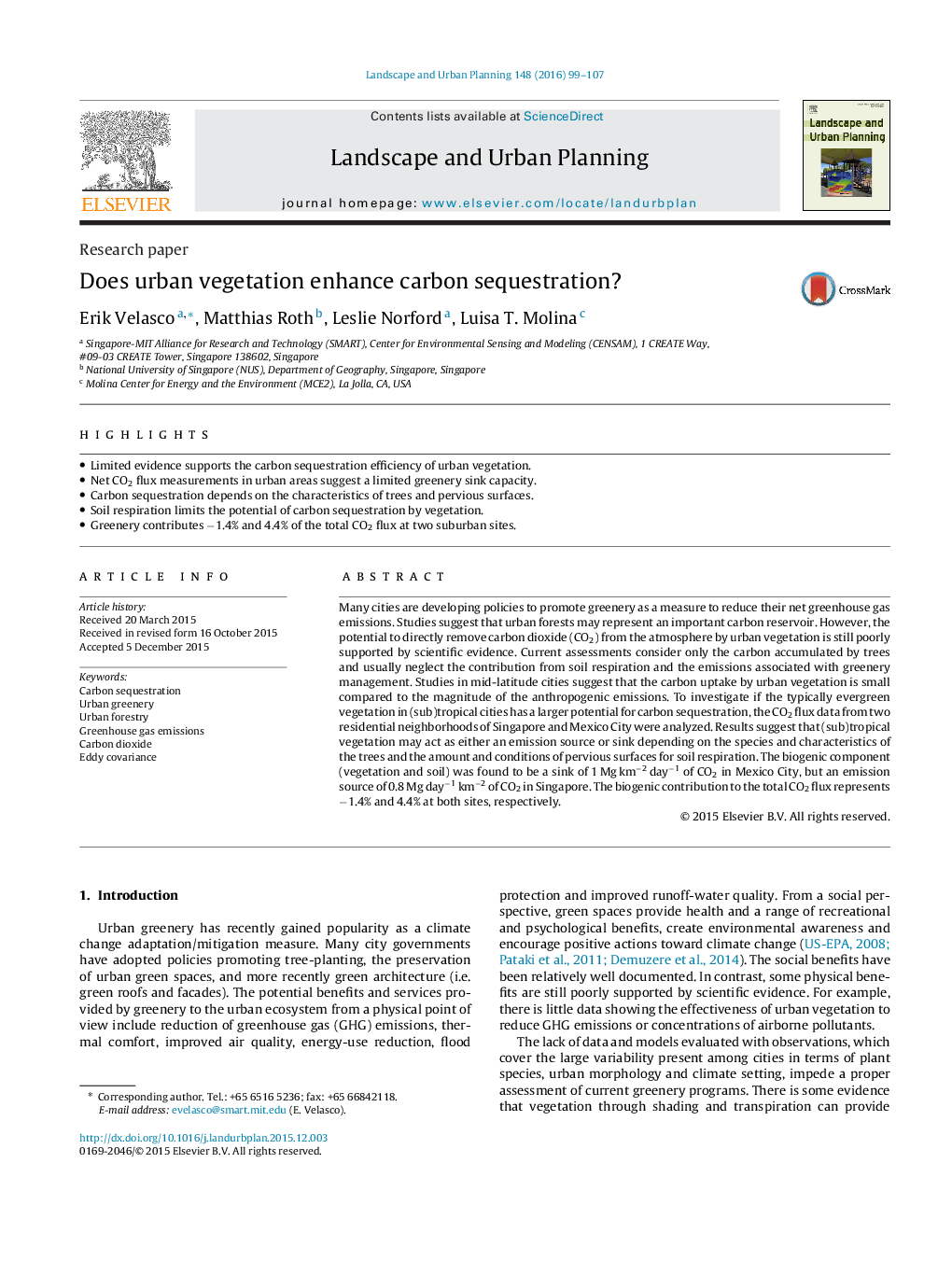| Article ID | Journal | Published Year | Pages | File Type |
|---|---|---|---|---|
| 7460761 | Landscape and Urban Planning | 2016 | 9 Pages |
Abstract
Many cities are developing policies to promote greenery as a measure to reduce their net greenhouse gas emissions. Studies suggest that urban forests may represent an important carbon reservoir. However, the potential to directly remove carbon dioxide (CO2) from the atmosphere by urban vegetation is still poorly supported by scientific evidence. Current assessments consider only the carbon accumulated by trees and usually neglect the contribution from soil respiration and the emissions associated with greenery management. Studies in mid-latitude cities suggest that the carbon uptake by urban vegetation is small compared to the magnitude of the anthropogenic emissions. To investigate if the typically evergreen vegetation in (sub)tropical cities has a larger potential for carbon sequestration, the CO2 flux data from two residential neighborhoods of Singapore and Mexico City were analyzed. Results suggest that (sub)tropical vegetation may act as either an emission source or sink depending on the species and characteristics of the trees and the amount and conditions of pervious surfaces for soil respiration. The biogenic component (vegetation and soil) was found to be a sink of 1 Mg kmâ2 dayâ1 of CO2 in Mexico City, but an emission source of 0.8 Mg dayâ1 kmâ2 of CO2 in Singapore. The biogenic contribution to the total CO2 flux represents â1.4% and 4.4% at both sites, respectively.
Keywords
Related Topics
Life Sciences
Agricultural and Biological Sciences
Ecology, Evolution, Behavior and Systematics
Authors
Erik Velasco, Matthias Roth, Leslie Norford, Luisa T. Molina,
